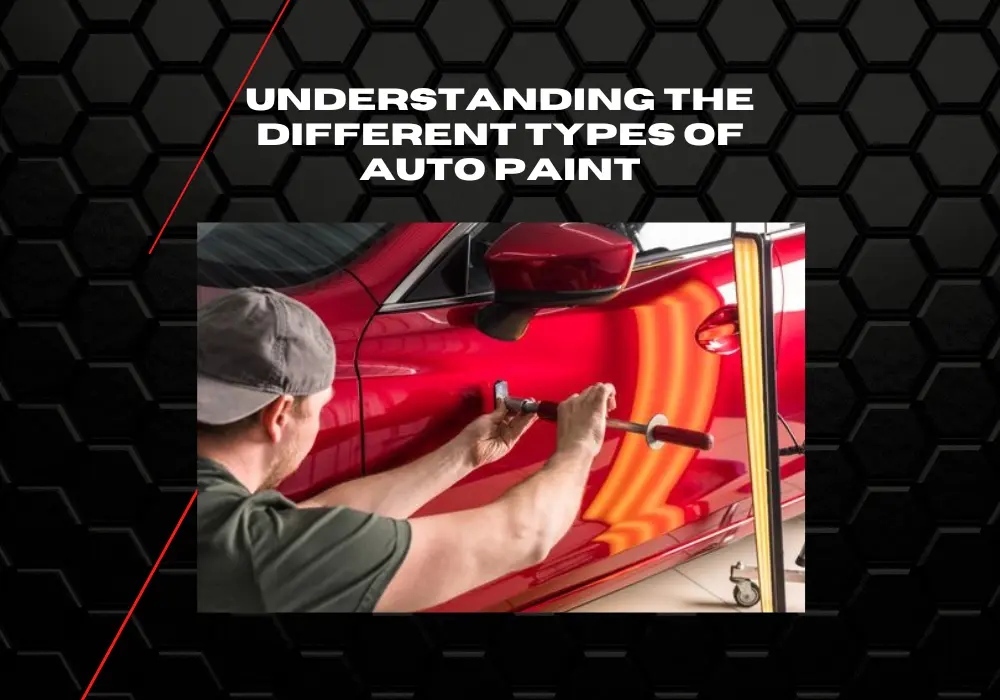Meta Title: Understanding Different Types of Auto Paint | Autotech Body Repair
Meta Description: Explore key auto paint types, applications & expert insights from Autotech Body Repair in Brampton. Learn how to choose the right paint for your vehicle.
Understanding Different Types of Auto Paint: A Comprehensive Guide
When it comes to automotive repairs, selecting the right paint is critical for durability, aesthetics, and long-term protection. At Autotech Body Repair in Brampton, we specialize in matching paint types to vehicle needs, ensuring seamless repairs that withstand Canada’s climate. Below, we break down the most common auto paint types, their applications, and how to choose the best option for your car.
Lacquer Paint: A Vintage Choice for Classic Restorations
Lacquer paint was once the gold standard in automotive coatings, prized for its high-gloss finish and fast-drying properties. However, its soft composition makes it prone to scratches and UV damage, leading to fading or cracking over time.
Key Features:
Pros: Easy to apply, ideal for achieving a vintage look.
Cons: Less durable, requires frequent touch-ups.
Best For: Classic car restorations or custom jobs where authenticity matters.
Competitor Insight: While competitors like NAPA/CMAX Brampton focus on modern paint systems, Autotech Body Repair retains expertise in lacquer for niche restoration projects.
Enamel Paint: Durability for Commercial and DIY Projects
Enamel paint offers a hard, glossy finish with excellent adhesion and resistance to wear. It’s widely used on older vehicles and commercial trucks due to its affordability and ease of application.
Key Features:
Pros: Resilient against chipping and fading.
Cons: Difficult to touch up; multiple coats may be needed.
Best For: Trucks, DIY repairs, or budget-friendly touch-ups.
Competitor Insight: Local competitors often prioritize enamel for its cost-effectiveness, but Autotech emphasizes precision color matching to avoid mismatched repairs.
Urethane Paint: The Modern Standard for Longevity
Urethane paint dominates modern automotive repairs due to its UV resistance, durability, and glossy finish. It’s available in solvent-borne and waterborne variants, with the latter reducing environmental impact.
Key Features:
Pros: Lasts up to 10 years, resistant to fading and chipping.
Cons: Requires professional application due to toxic fumes.
Best For: New vehicles, high-end restorations, and eco-conscious repairs.
Competitor Insight: Unlike competitors relying solely on solvent-borne systems, Autotech offers waterborne urethane options for eco-friendly repairs.
Acrylic Paint: Versatility for Budget-Friendly Repairs
Acrylic paint is available in water-based and solvent-based forms, balancing affordability with ease of application. However, it fades faster than urethane and lacks durability.
Key Features:
Pros: Quick-drying, forgiving for DIY projects.
Cons: Less resilient to UV exposure.
Best For: Older vehicles or temporary fixes.
Competitor Insight: While competitors may recommend acrylic for cost savings, Autotech advises against it for long-term repairs, prioritizing urethane for lasting results.
Basecoat-Clearcoat vs. Tri-Coat Systems
Modern vehicles often use multi-stage paint systems for enhanced aesthetics and protection:
Basecoat-Clearcoat
A two-stage system combining a colored basecoat with a protective clearcoat. Ideal for standard vehicles, it provides shine and UV resistance.
Tri-Coat (Multi-Stage)
Used for luxury cars, this system adds a translucent mid-coat with pearls or additives to deepen color. It offers unmatched luster and durability.
Competitor Insight: Autotech specializes in tri-coat applications, whereas competitors may limit options to basecoat-clearcoat for cost efficiency.
Waterborne vs. Solvent-Borne Paint Systems
Solvent-borne paints contain volatile organic compounds (VOCs), posing environmental risks. Waterborne paints use water as a carrier, reducing VOCs and aligning with eco-friendly standards.
Key Features:
Waterborne: Better for the environment, compliant with regulations.
Solvent-Borne: Higher gloss but less sustainable.
Competitor Insight: Autotech leads in waterborne technology, while competitors like NAPA/CMAX Brampton still rely heavily on solvent-based systems.
Removable vs. Nonremovable Paint
Removable paint (e.g., vinyl wraps) allows temporary customization without damaging the original finish. Nonremovable paint is permanent and used for full repaints or touch-ups.
Key Features:
Removable: Ideal for promotional vehicles or seasonal designs.
Nonremovable: Best for long-term repairs or restorations.
Competitor Insight: Autotech offers both options, whereas competitors may focus solely on nonremovable paints.
How to Choose the Right Auto Paint
Vehicle Age and Use: Lacquer for classics, urethane for modern cars.
Budget: Enamel for affordability, tri-coat for luxury.
Environmental Impact: Opt for waterborne urethane.
Durability Needs: Urethane or enamel over acrylic.
Why Choose Autotech Body Repair in Brampton?
At Autotech, we combine expertise in niche paint types (e.g., lacquer, tri-coat) with eco-friendly waterborne systems. Unlike competitors, we prioritize precision color matching and long-term durability, ensuring repairs blend seamlessly with your vehicle’s original finish.
Final Thoughts:
Auto paint selection isn’t one-size-fits-all. By understanding the strengths of lacquer, enamel, urethane, and acrylic paints—and leveraging advancements like waterborne systems—you can ensure your vehicle looks and performs its best. For tailored advice, visit Autotech Body Repair in Brampton today.

